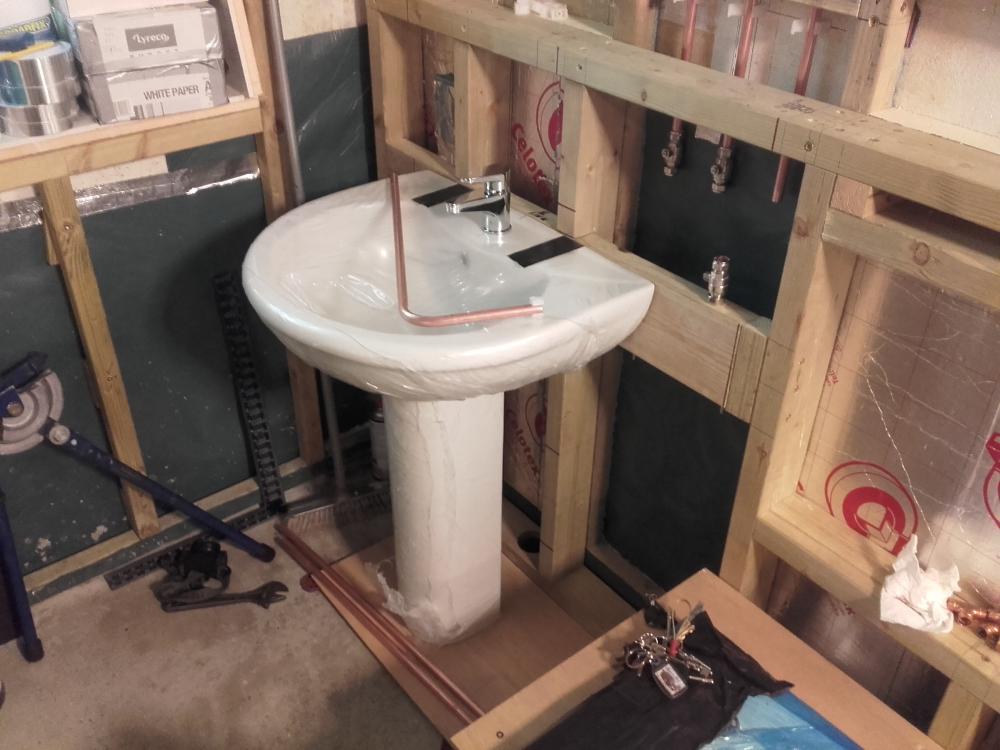Leaderboard
Popular Content
Showing content with the highest reputation on 08/10/16 in all areas
-
I've just spent ages searching ebuild for one of the couple of threads where this was discussed but I can't seem to find them. Short version: we first introduced ourselves to all our neighbours when we moved in. Had them around en masse for Christmas drinks etc (I should add: this wasn't just a ploy to help us getting planning permission - we'd have done this anyway). Over time, we introduced the idea of extending, then significantly extending. We then moved on to the general idea of replacement in view of the costs of such a large extension. By the time we actually went for planning, everyone in the immediate vicinity expected us to be replacing the bungalow with a new house, so that wasn't a surprise (avoiding surprises is, in my opinion, the biggest key to reducing the chance of objections). It's a common mistake at this point to be open with your neighbours about your plans, and to invite their feedback. This would have been my approach had I not been counselled strongly against it by our local architect. He pointed out that once you ask for feedback, you plant in people's mind an expectation that you'll take their feedback into account, not matter how unreasonable it is or how much extra it will cost you. Most people will want you to make your plans smaller and more conservative, if they agree to them at all. Then when you say you can't or won't, they become emotional and object. Worse, you might have different people asking for different incompatible changes, in which case you're bound to disappoint someone even if you're willing to compromise. In the end, we told people we'd show them what we were building before we submitted the planning application, "so you know what we're doing". A couple of days before submitting the planning application, we provided them with an impression of the roadside view from Sketchup (the house is set back quite a long way and partially concealed by a tree, so this showed the house looking very small in the street scene), along with a letter setting out what we were trying to achieve. We talked about improving the street scene (the bungalow was pretty ugly, and we'd intentionally allowed the front garden to deteriorate!) and reducing energy consumption, but half of the letter was about the build itself. We explained how we were using a factory-built timber frame so it would go up quickly and with minimal impact on the neighbours. We explained that we would be onsite every day and welcomed any feedback about reducing the impact of the build on the neighbours. In the end, we had no neighbour objections, and a couple of letters of support. The town council objected, but they always do when anything that doesn't look like it was built in the 1930s is proposed. I have no evidence to support my opinion, but I believe that presenting the proposal as a fait accompli reduced the chances of objection, because people were less thinking about the planning application and more thinking about the (inevitable!) build. We may also have been lucky with "objection fatigue". Two other nearby properties (including our immediate neighbour) did very similar things to what we were planning, and both faced significant local objections. I do wonder whether the fact that both of those ended up getting through left people a bit tired of objecting and losing. But I also think that how you present your intentions will nearly always help your cause.2 points
-
They are indeed, we treated the fascia boards ourselves. I'll get some photos for you ASAP.1 point
-
Not that I'm aware. And I think they work out about the same price so that points strongly towards Sioo.1 point
-
1 point
-
It had crossed my mind, I figured reasonable sized round ones could be easily replaced in future. famous last words. Not sure why you're bothered, you're a dab hand at plastering now!1 point
-
1 point
-
I bought a converted container that has a 10' site office with secure door, window, laminate floor, insulated & plastered walls & ceiling and power & lighting. The rest is 15' of general storage (I insulated the ceiling with 50mm EPS to prevent condensation) and the traditional container doors to the rear. Was about £1600 on ebay and I paid £300 for one way HIAB transport to site (was about 30-40 miles away). The site office has been great for me and also all the trades and a secure place to store tools & materials overnight. I have the BT line terminated there with our DSL router there using powerline to transfer it to the caravan and to the house itself for the PV monitor. We packed the rear part with our own possessions, saving a fortune on storage costs. Have been using damp sticks to control humidity, all seems fine. May actually get to unpack it all next week if the painters are finished in the basement - that will be a red letter day! Hope to sell it on for pretty much what I paid for it.1 point
-
We went with their own contracts. JCT I felt was too generic. A sensible builders contract I felt was more amendable to our specific situation.1 point
-
I would be contacting your local Planning Authority and asking them to tell you / provide you with a copy of their replacement dwelling policy. You are not asking for pre app advice, simply wanting to establish what local policy is, what it allows and does not allow. They will have a policy, it's simply a case of getting hold of it. Once you know what the policy is, you frame your application and design statement in policy terms. For example: Excerpt from Orkney Islands Council policy: " During the early 20th Century there was a shift from using local and natural materials for the construction of buildings in distinct local styles toward a more uniform system using mass produced synthetic materials. In some instances, these dwelling houses, often built of concrete block, are now in need of replacement. Throughout the Orkney countryside there also exist examples of converted wartime buildings which have been adapted for domestic use and later structures, such as blocked-in caravans, which are legitimately in use as dwelling houses, which are substandard, are impractical and are unsuitable for use as living accommodation. Potential replacement properties are not limited solely to these examples, however, and it may be the case that the owner of a property has just cause to replace a more modern building that dates to recent times. The replacement of an existing habitable rural dwelling house, or a former dwelling house which meets the test of dereliction, with a single new dwelling house will be supported where it does not feature on the Orkney Local List. Whilst there is no requirement for any replacement building to be of the same proportions or size as the original, it should be located in the same position as the building to be removed unless there are demonstrable planning benefits for an alternative location. Only one replacement dwelling house may be delivered per existing house through this route and planning conditions will require that the original dwelling house must be completely dismantled prior to the commencement of the construction of the replacement building. This option applies primarily to dwelling houses which are not constructed of natural or local materials using traditional methods. The Council recognises that, on occasion, a property which is occupied and is in use as a dwelling house is either unsustainable or is of poor quality/design and is failing as a building. In these instances it may be desirable to replace the building with a more suitable alternative, which meets the demands of modern regulations and modern living." The final couple of sentences, and earlier reference to substandard, impractical and unsuitable for use as living accommodation would be the reasoning I would use to support any application.1 point
-
Our project is similar: We are demolishing the existing bungalow and replacing it with a 2-storey house with a slightly larger (filling in the gaps) footprint, although we are not moving it much, just off the boundary. My blog has the planning battle details in it, but go for what you want, providing it isn't wildly out of character, even go slightly over so you that have a pre-determined compromise plan and the planners can be seen to have won something from you.1 point
-
Russ have a look at your local planning portal. You will be surprised at how many new houses are built and how many are self build. Have a look at those both passed and refused and it will give you an idea as to how your local planners think. I am removing the old dwelling completely and moving the new dwelling slightly off the old footprint. As a replacement and a self build you will not have to pay any CIL as long as you build a new dwelling which saves a fortune in fees. I found that the local planner liked traditional design fitting in with the existing houses so that is the route we took. I also expected them to ask for a reduction in size and height so built slightly higher and larger than i wanted however it went through without problem to my surprise. I did mine without any professional help including the design and plans for submission. I asked the local parish councillor around and talked them through our plans very early on and answered any of their questions, although some say they have no influence most have the ear of the planners. As for the neighbours they can create merry hell so be open with them and include them as early as you can. My neighbours wanted the new house moving away from the boundary so i suggested that two story would enable me to do that to which they agreed. Remember as a replacement dwelling there is a limit of 150% increase before it causes major issues. Good luck1 point

.jpg.c21f3ac78c9b7efd90cbdcb312744dc5.thumb.jpg.7adcad4c0e384f5ecd7d56b0618df6e5.jpg)









